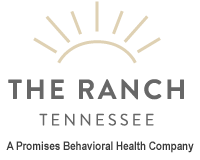Many individuals who have obsessive-compulsive traits find themselves diagnosed with obsessive-compulsive disorder and dual diagnosis. Most frequently, the co-occurring disorder found alongside obsessive-compulsive disorder (OCD) is an eating disorder. Talk to an expert today at the dual diagnosis treatment center in Pennsylvania about obsessive-compulsive disorder and dual diagnosis symptoms.
Symptoms of Obsessive-Compulsive Disorder
The chief characteristic of obsessive-compulsive disorder is the presence of either obsessions or compulsions that significantly impair daily functioning. For many persons with this disorder, both symptoms of obsessions and symptoms of compulsions are present. These occur along with some awareness that the thoughts or behaviors are excessive, irrational and unreasonable.
Obsessions
Obsessions are persisting thoughts that are experienced as intrusive, unwanted and inappropriate. Obsessive thoughts cause significant distress, preoccupation and repetitive efforts to suppress or control them. They are experienced as recurring thoughts that are unreasonable and excessive but beyond one’s control. Obsessions may also be persistent and distressful impulses and mental images. They, too, are experienced as intrusive, unwanted and inappropriate ideas. Impulses and mental imagery that are of an obsessional nature also create significant anxiety and preoccupation. Additionally, they frequently require much effort to cope with them in the course of daily life.
Compulsions
Compulsions are any repetitive behaviors used to diminish distress. These may involve such activities as:
- Hand washing
- Counting
- Praying
- Repeating words
- Checking
- Cleaning
- Bathing
- Putting objects into a specific order
- Establishing arbitrary rules and procedures
- Making repeated requests for reassurance
Compulsions, like the obsessions in this disorder, eventually become problematic themselves. Many people find that their preoccupation with performing compulsive behaviors begins to interrupt normal functioning as well. Compulsions can be very time-consuming as well as anxiety-provoking. For example, significant distress is experienced if the behaviors are not completed or performed correctly. For some, obsessive thoughts develop into compulsive behaviors.
Attempts at Coping with OCD and Dual Diagnosis
Efforts to cope with obsessions are typically geared towards suppressing or disempowering them. Individuals with obsessive-compulsive disorder and dual diagnosis attempt to push obsessive thoughts, impulses, and images out of their awareness by distracting themselves from them, ignoring them or neutralizing them. Oftentimes, behaviors are used to help ward off the anxiety and distress caused by obsessive thinking. Many individuals with this disorder will develop a repertoire of behavior used to defocus their attention from obsessive thinking. Behavioral attempts to control obsessions can temporarily reduce the sometimes overwhelming anxiety related to such thinking. As these coping behaviors become repetitive and ritualized, compulsions and compulsive behaviors develop.
Addictions and Obsessive-Compulsive Disorder
All addictions involve a degree of obsession and compulsion related to the specific addictive behaviors that are present. For example, those with substance use disorders typically have a persisting mental preoccupation with their substance of addiction. Additionally, they feel compelled to use the substance despite recurring negative consequences that have resulted from its use. Similarly, individuals involved with other addictive processes such as eating disorders, pathological gambling, and sexual compulsivity, also experience a preoccupation with their addictive behaviors and a felt compulsion to engage in them. With obsessive-compulsive disorder and dual diagnosis treatment, the following programs are considered based on symptoms:
- Process addiction treatment programs in PA
- Residential eating disorder treatment in TN
- Specialized substance abuse treatment
- Mood disorder treatment in Wrightsville
There is usually a significant difference between the origins of obsessions and compulsions involved in an obsessive-compulsive disorder and those involved in addictive disorders. The obsessions and compulsions in addictive disorders typically develop out of a pursuit of gratification and pleasure. Addictive obsessions are usually colored by euphoric memories and fantasies of a pleasurable experience to come. Similarly, compulsions related to addictive behaviors are usually driven by the desire to experience pleasure. In obsessive-compulsive disorder and dual diagnosis, however, obsessions are distressful thoughts, images, and impulses that cause dread, fear, panic or loathing. Behaviors involved in obsessive-compulsive disorder do not gratify or give pleasure but serve only to partially diminish distress temporarily. Those who have an obsessive-compulsive disorder may develop an addiction after repeated use of an addictive substance or addictive process to cope with their distress. In fact, many with obsessive or compulsive symptoms are at risk of doing so. Individuals with obsessive-compulsive traits are particularly prone to develop an eating disorder if their preoccupations involve body-image and food-related anxiety. If an addictive disorder or eating disorder does develop, that condition also becomes a primary diagnosis requiring treatment as well. A co-occurring addictive or eating disorder developed becomes of lesser importance once the full disorder has emerged. At that point, successful treatment of the addiction or eating disorder is an additional primary concern. For those with obsessive-compulsive disorder and dual diagnosis, both the obsessive-compulsive disorder and the co-occurring addiction or eating disorder must be treated at the same time to ensure a fully successful recovery.
Eating Disorders and Obsessive-Compulsive Disorder
Eating disorders are commonly considered to involve addictive processes that include obsessive thinking and compulsive behavior much like that seen in problematic substance use, gambling and sexual compulsivity. The dynamics of eating disorders are very similar to those of obsessive-compulsive disorder, however, and conditions like anorexia nervosa and bulimia nervosa seem to bridge both diagnostic categories sharing characteristics of both. The treatment of eating disorders will often borrow from treatment approaches used for both types of the disorder as well. Individuals with eating disorders are usually motivated by distressful thoughts and feelings related to body image. The repetitive and ritualized nature of behaviors in an eating disorder is compulsive and continues despite negative consequences as do the behaviors in addictive disorders. However, fear of becoming overweight, self-loathing related to body size and food-related anxiety are the core characteristics of eating disorders. As in obsessive-compulsive disorder, individuals with eating disorders are generally motivated by overwhelming fear and distress rather than a pursuit of gratification and pleasure as is more typically seen in addictive disorders. Put a stop to eating disorder fears with the following programs at The Ranch:
- Anorexia treatment program in PA
- Bulimia nervosa treatment in PA
- Binge eating disorder treatment
- OSFED treatment in Wrightsville
Recovery
Successful treatment of obsessive-compulsive disorder and dual diagnosis generally involves a multidisciplinary approach that targets anxiety, thoughts, and behaviors. Cognitive-behavioral therapy in PA and other behavioral techniques are used to change thought patterns and dysfunctional behaviors so that healthier, more appropriate ones can be substituted. Relaxation techniques help manage anxiety, stress, and tension. Medications may also be used to reduce tension and decrease excessive negative thinking. Additionally, supportive counseling helps develop insight and enhances coping skills and strategies. When a co-occurring addictive disorder or eating disorder is present, treatment typically includes education specific to these disorders, counseling designed to target their specific behaviors and support resources such as 12 step programs and disorder-specific groups. Call 1.844.876.7680 today to find lasting recovery for obsessive-compulsive disorder and dual diagnosis.



